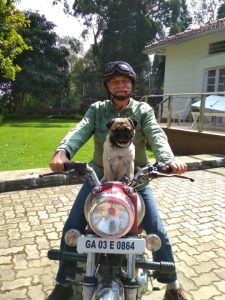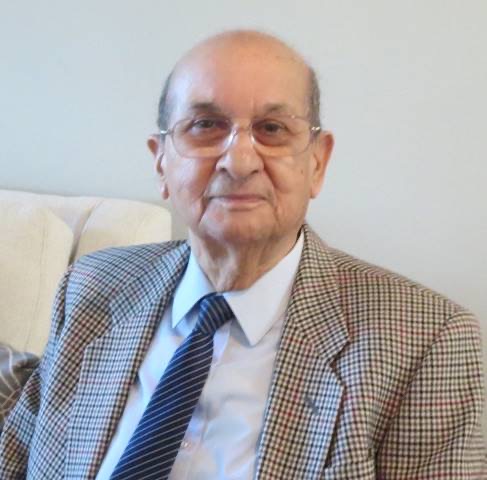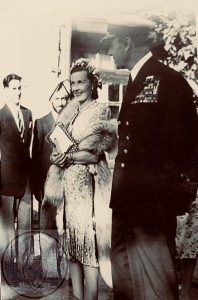 We are proud of Old Cottonian Dr. Vaneet Jishtu [Ibbetson 1972-81, Associate School Captain 1981], one of our great achievers in a highly specialised field where he’s made a mark and had set the bar really high.
We are proud of Old Cottonian Dr. Vaneet Jishtu [Ibbetson 1972-81, Associate School Captain 1981], one of our great achievers in a highly specialised field where he’s made a mark and had set the bar really high.
Vaneet is a Senior Scientist at the Himalayan Forest Research Institute (HFRI) in Shimla, Himachal Pradesh, with a M. Sc. and Ph.D. in Botany with specialisation in Taxonomy and Cold Deserts. Presently is Head, Extension Division; ICFRE- Himalayan Forest Research Institute Shimla
Specialising also in high-altitude Himalayan flora, Dr. Jishtu has led initiatives like the Western Himalayan Temperate Arboretum at Potter’s Hill, focusing on ex situ conservation of native tree species . His research includes studies on the distribution and ecological status of medicinal plants like the Ashtavarga group in Shimla District . Dr. Jishtu has also conducted biodiversity awareness programs in Ladakh, emphasizing the preservation of local medicinal plants.
Jerry Godhino interviewed his Batchmate and asked Vaneet: WALK ME THROUGH IF THERE ARE ANY UNIQUE OR UNUSUAL PLANTS IN THIS REGION?
Vaneet:
Flora of Shimla had numerous unique plants around a century ago, when Henry Collet published Flora Simlensis (1902).
 Lilium polyphyllum (important ingredient of Ashtavarga) was reported as common under cedars, but sadly now not a single individual has been sighted over the past few decades.
Lilium polyphyllum (important ingredient of Ashtavarga) was reported as common under cedars, but sadly now not a single individual has been sighted over the past few decades.
A large number of terrestrial orchids are found around Shimla during monsoon months. The heart shaped lady’s slipper orchid (Cypripedium cordigerum) is very rare among these orchids, restricted to few individuals in some moist pockets. Another unique orchid once found on the BCS spur was lady Suzane’s orchid – Pecteilis gigantea. Today, its habitat has been disturbed with concrete buildings packed on that particular spur.
[Read the entire interview here]
A brief Resumé: Dr. Vaneet Jishtu
Age: 59 years
Profession: Scientist with the Himalayan Forest Research Institute(HFRI), Shimla, Himachal Pradesh; under the Indian Council of Forestry Research & Education (ICFRE) of MoEF&CC, GoI.
Schooling from Bishop Cotton School, Shimla, graduated from Punjab University, Chandigarh and post-graduation from HP University, Shimla. Besides; additionally, Bachelors Course in Journalism & Mass Communication.
Has handled more than 30 projects/consultancies as Principal Investigator/Co-PI; important ones include the ecological survey in the Hemis High Altitude National Park, Ladakh; surveys to map the Ashtavarga group of Medicinal & Aromatic Plants; Long Term Monitoring Global Warming Project in the High-Altitude Transition Zones across Himachal; Mapping of Forest Genetic Resources (FGR). Significant contribution pertains to the establishment of the Western Himalayan Temperate Arboretumnear Shimla, a novel native tree species conservation programme in the NW Himalayas.
Has been a FAO Fellow to study Cold Desert Afforestation Programme with the USDA. Besides, a Peer Review Member of the Cumulative Environment Impact Assessment (CEIA) committee of the GoHP for river valley projects in the state. Handled a number of consultancies & Environment Impact Assessment (EIA) studies, notable being the EIA for the Doklam border road in East Sikkim.
Besides, being consultant/resource person to HP Forest Department, Department of Energy GoHP, WWF, IDRC, GIZ, GHNPCA (UNESCO Heritage), USAID, SKAUST, HIMCOSTE, Academic Staff College, FRLHT-Bangalore, HIPA, IGNFA-Dehradun, National Academy of Audit & Accounts (NAAA)-Shimla, State Medicinal Plant Board-Government of Sikkim, Allahabad University, St. Bedes College Shimla, HP University, Kurukshetra University, etc. Has delivered numerous invited lectures or as key note speaker for the above organisations/institutes.
As Supervisor, successfully guided 3 Doctorate degrees, 3 students presently working under my guidance, besides Co-Guide for 3 other students.
Was part of the team to present the unique flora of the GHNP, Kullu for successfully obtaining the UNESCO Heritage status, presently member of the Working Group on Integrated Management of GHNPLandscape through an initiative of The Nature Conservancy – India (TNC). Besides, represented ICFRE during the COP14 with presentation on Desertification in context to the Cold Desert Ecosystem, and also during the Carbon Neutral Ladakh Summit-2020 to present the roadmap of ICFRE. Represented India among the 38 Juniper growing countries at the International Conference on Junipers at Kyrgyzstan.
Besides, a keen photographer, well travelled extensively across the high NW Himalaya and the Trans-Himalayan cold desert. Has acquired an amazing storehouse of the rich Indigenous Traditional Knowledge of the region.
Publications: More than 150 publications, which include Books, Book Chapters, Research Papers, Research Articles, Brochures, Pamphlets, etc. Besides, as resource person on radio and television.
As Coordinator, conducted various workshops/trainings; notable being the REDD PLUS (Jammu & Kashmir and Ladakh UTs, HP); IFS Mid-Term and for the NDMA, GoI New Delhi.
Awards: Recipient of the Brandis Award in Indian Forester (2016)and has featured among the 50 people to know across the Himalaya(Condé Nast Traveller, USA) for working tirelessly and bringing changes in their respective fields. Awarded the Rotary Shreyas Award, 2022-23 for contribution towards native plants conservation in the NW and Western Himalaya. Listed in the Asian Admirable Achievers, 2025.
Life Member in Professional Societies: International Society for Environmental Botanists (ISEB) Lucknow; Indian Association for Angiosperm Taxonomy (IAAT), Rheedea and The Orchid Society of India.
Editorial Board: Journal of Traditional and Folk Practices.
Special QUOTE by Vaneet:
The world is self-centred – too busy with their daily lives, with little or no interest in conserving or protecting wild life – both flora and fauna. The forests in and around Shimla have been subjected to neglect and show visible signs of habitat degradation.















